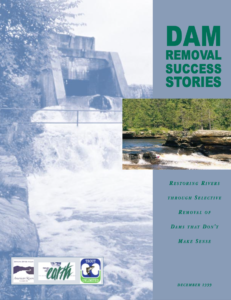“That’s a lot of water…”
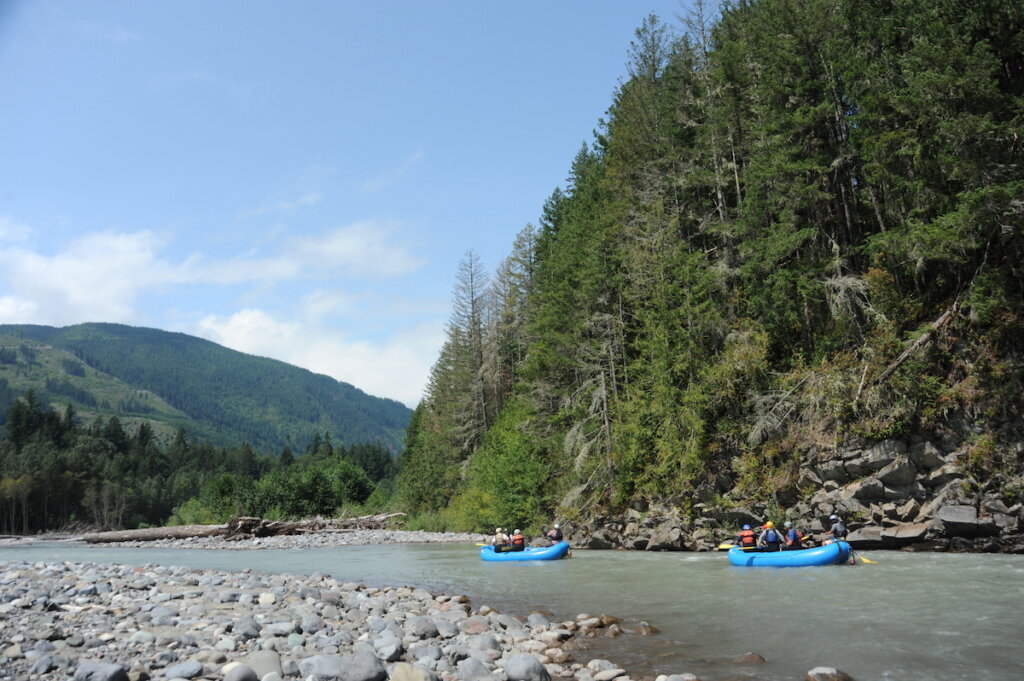
It was a lot of water. More water than I’m used to seeing rushing towards the canyon section of Northwest Washington state’s North Fork Nooksack River. A few stomachs flipped as we peered over the bridge at the thousands of cubic feet of water blowing right past us, but the excitement of rafting those giant waves quickly took over.

American Rivers recently had the pleasure of co-hosting a whitewater rafting trip with a local nonprofit organization called the Vamos Outdoors Project — a group, based in Whatcom and Skagit counties, whose mission is to build community through connection to the land and access to the outdoors.
American Rivers recognizes that conservation and environmental education traditionally underserves Latine, Migrant, and Multilingual communities, disconnecting them from their rivers and the environmental threats that disproportionately burden their communities. We wanted to create a fun experience for the youth of these communities — one that would foster new advocates who will engage in Northwest river protection efforts for years to come. Thus, the idea of a river rafting trip was born.

Eleven students and two trip leaders from the Vamos Outdoors Project piled out of the van on a drizzly morning in early June, all brimming with excitement. They wriggled into their wetsuits, and everyone’s safety equipment was checked for proper fit. A few students grew nervously quiet as we approached the bridge under which we would launch the rafts. The river was raging at over 3,000cubic feet per second. Spring runoff had just peaked, and Mt. Baker was shedding her winter coat directly into the Nooksack. It was a lot of water—beautiful and breathtaking.
The professional guides conducted a thorough safety check and tested our knowledge of the paddling commands. We then set out on the first section of our trip. Hoots and hollers filled the canyon for several miles. Nearly everyone was beaming as we pulled over on the river for lunch.
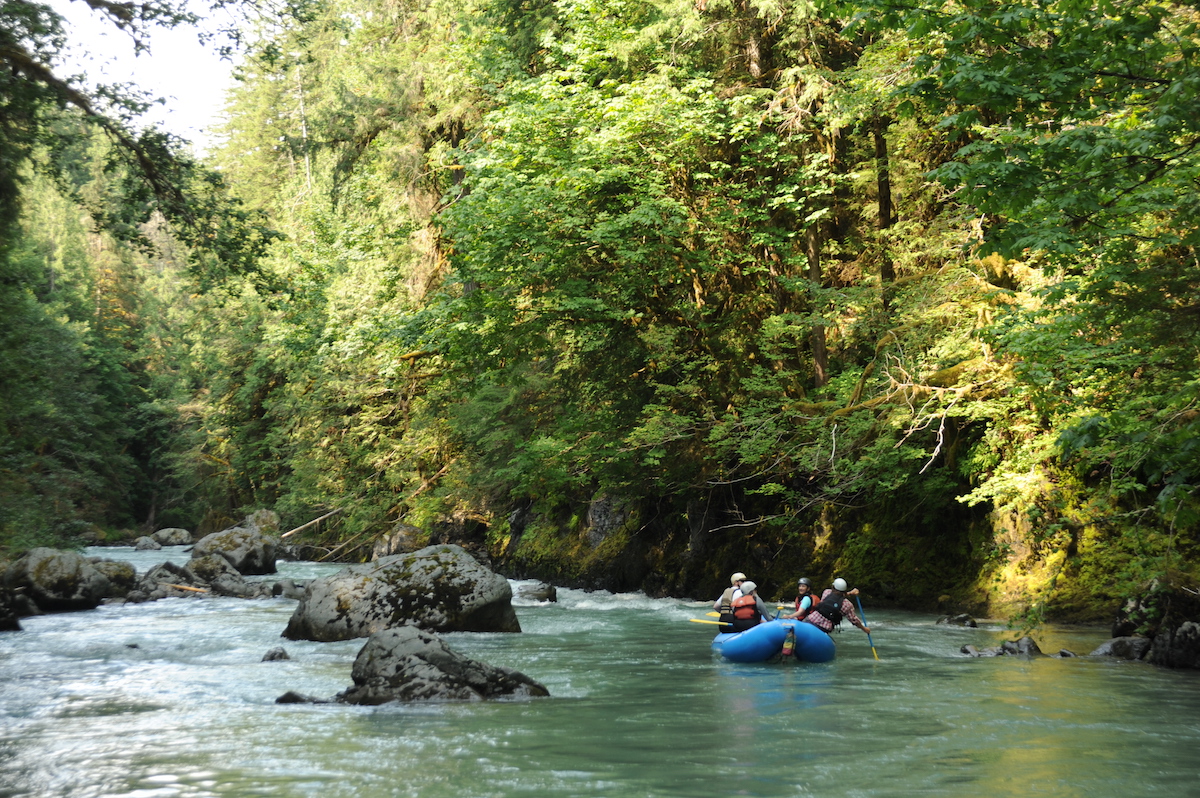
I introduced the students to a handy way of remembering the five Pacific salmon species that call the Nooksack River home. They also collected macroinvertebrates (bugs that salmon like to eat while they rear in freshwater) and discussed the life cycle of Pacific salmon. A restoration staff member from the Nooksack Indian Tribe talked about some of the threats the river faces (logging, irresponsible recreation, dams, etc.). The Nooksack people have stewarded this watershed for centuries, and today, the Tribe’s restoration team implements several projects throughout the river, including the installation of engineered log jams that provide habitat for all life stages of salmon and steelhead. Through their efforts, and those of numerous partners, habitat is recovering from erosion, the riparian forest is reconnecting to its river and floodplain, and dams like the Middle Fork Nooksack Dam are being removed to restore a free-flowing river.
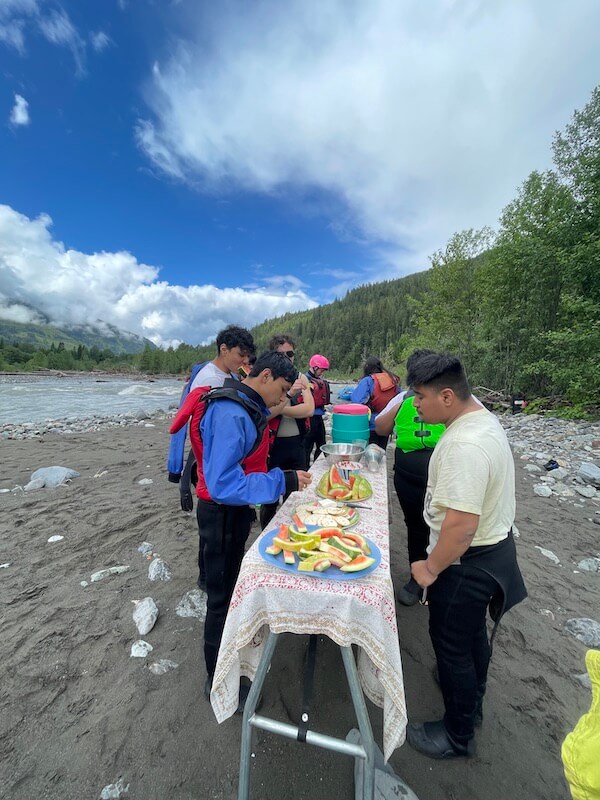
After two devoured watermelons and a near-stampede when the brownies came out at the end of the lunch hour, we were all back on the river together. The sun had emerged to illuminate a whole mess of smiles, disappearing behind and then rising above the river waves.
We closed the trip by sharing our rose, bud, and thorn: one thing about the trip that you really enjoyed; one thing that you want to improve upon; and one part that was particularly challenging. Following the paddling commands and changing stroke patterns on a dime, were challenging for most. But for eleven students doing a highly adrenaline-inducing activity for the first time, I was elated to hear that so many of the kids were looking forward to “next time.”
Trips like this one are dynamic ways to engage Latine and Migrant youth, who aren’t always offered the opportunity to get to know their river in this way. Creating opportunities to interact with and learn about the river builds and strengthens connections and understandings of the North Fork Nooksack River’s ecosystem, the people who rely on it, and the work being done to protect and enhance it – work such as the Nooksack River Wild and Scenic effort. Since 2012, American Rivers and several local partners have been working to secure permanent protections for the Nooksack River, which will allow for the protection and restoration of all five Pacific salmon species and steelhead; protect the river’s clean water used for drinking, farming, outdoor recreation, and tourism; and ensure the river remains free flowing. We were also able to introduce the students to the Maple Creek River Access Site—a plan put together in collaboration with the Washington State Department of Natural Resources, Whatcom Land Trust, American Whitewater, and others which will, once completed, provide public recreation access along the North Fork Nooksack River, while also allowing natural resource managers to protect, restore, and enhance the adjacent riparian forest and natural river systems.
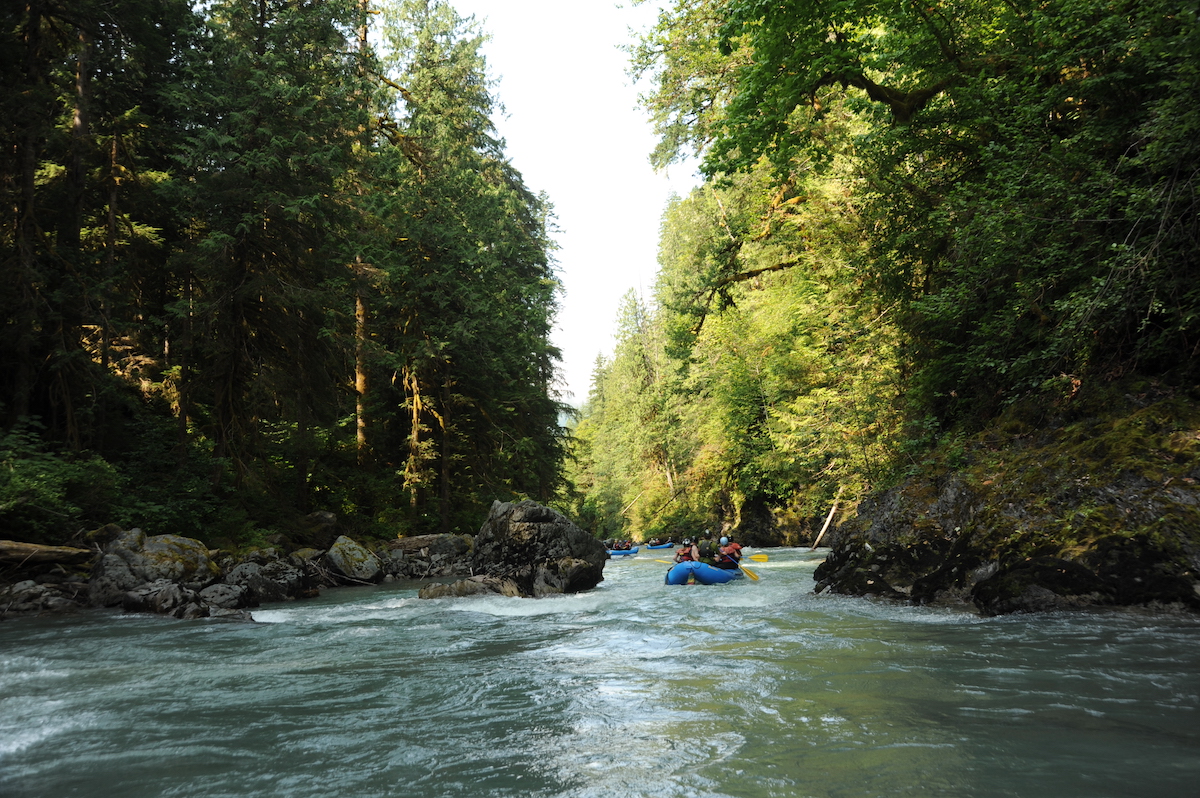
This trip was made possible by the generous support of the Wilburforce Foundation, Superfeet, the Mountaineers Foundation AKA the Keta Legacy Foundation, and the Norcliffe Foundation. We are so grateful for your support of this trip. Thank you for supporting these youth, their education, and their budding roles as river advocates.
Language Note: Vamos Outdoors Project uses the terms ‘Latine,’ ‘Migrant,’ and ‘Multilingual’ to refer to their community and their students.
The post “That’s a lot of water…” appeared first on American Rivers.

